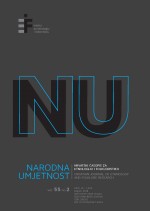Tijelo, društvo, prostor: iskustva slijepih u Zagrebu
BODY, SOCIETY, SPACE: THE EXPERIENCE OF BLIND PERSONS IN ZAGREB
Author(s): Laura ŠakajaSubject(s): Health and medicine and law, Rural and urban sociology, Sociology of Culture, Welfare services
Published by: Institut za etnologiju i folkloristiku
Keywords: blind persons; persons with disabilities; body; stereotypes, spatiotemporal rhythms; disability models;
Summary/Abstract: This article presents selected results of an interview study conducted with blind and visually impaired persons in Zagreb. It demonstrates that the experience of a blind person in the public spaces of a city is part of the interaction between the person’s own body, the physical characteristics of the urban environment and the dominating social discourses about blind persons. In this interaction, the social and the bodily are interconnected. The fi rst part of the paper discusses the spatiotemporal dimension of mobility of blind persons in an urban space. The analysis shows that the city structure, its design, infrastructure, which have primarily been designed for people without physical disabilities, infl uence the spatiotemporal models of the movement of blind persons, which is refl ected in the fact that their movement is restricted to a limited number of routes and time rhythms which are in consonance with the body and its limitations and possibilities. In the second part, the article focuses on stereotypes. The following characteristics of widespread stereotypes about blind persons emerge: a) the stereotype that identity of a blind person is limited to his/her blindness; b) the stereotypical attribution of certain “unusual” characteristics to blind persons; c) the stereotypical underestimation of the ability of blind persons to complete everyday tasks; d) and a stereotypical generalization of the blind person’s inability to see into the assumption about his/her general inability. These stereotypes which transform a bodily characteristic into social imagery materialize as social obstacles which blind persons face. These conclusions are arguments in favor of a model of disability that would recognize the reality of a body with physical disabilities, at the same time ensuring a just and nondiscriminatory social frame in which the abilities of persons with disabilities could be freely realized.
Journal: Narodna umjetnost - Hrvatski časopis za etnologiju i folkloristiku
- Issue Year: 50/2018
- Issue No: 2
- Page Range: 57-73
- Page Count: 17
- Language: Croatian

